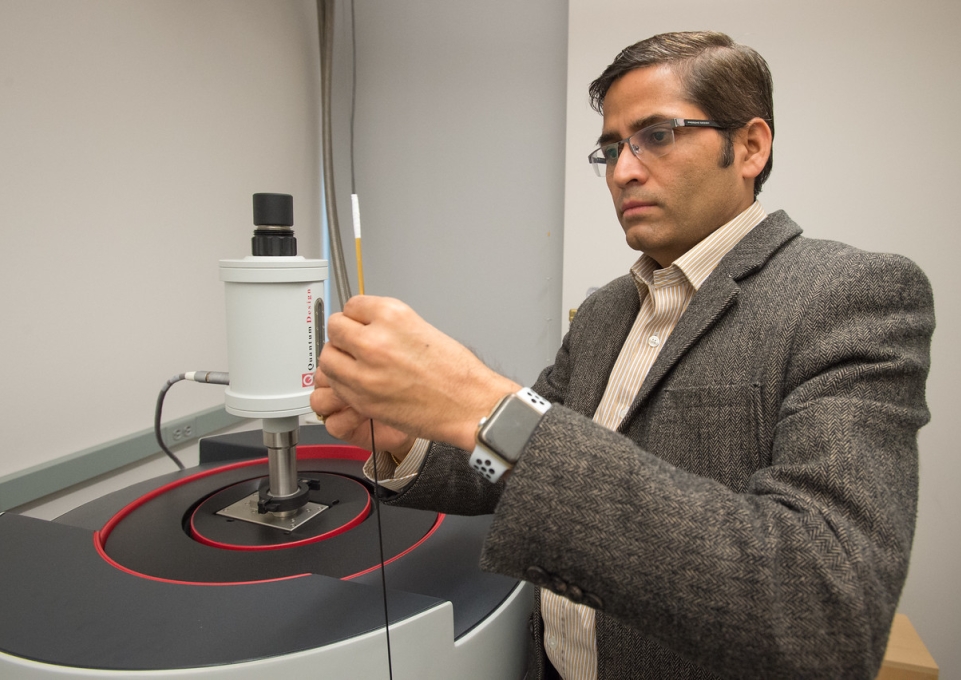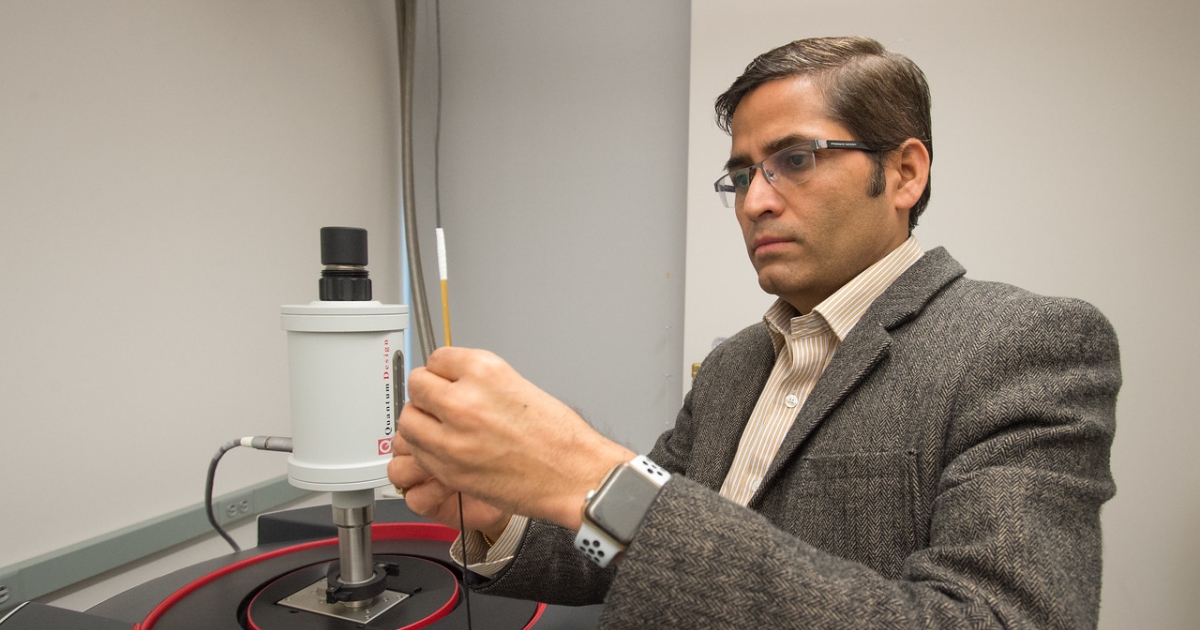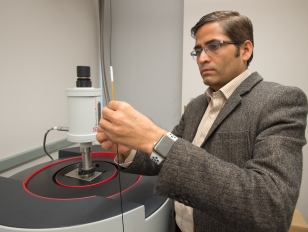
Arjun K. Pathak, assistant professor of physics, wants refrigerators to be more environmentally friendly. His research shows it’s possible, but the problem is finding the materials to do it.
“Lanthanide is super expensive,” he said, referring to the materials needed for alternative cooling systems. “Even if you have the money, you may have a hard time getting it since China controls most lanthanide metals.”
With that in mind, Pathak is working to find a way to bypass lanthanides in the refrigeration process—using magnets.
“My research right now is trying to find an alternative that is nontoxic and easy to produce,” he said. “That’s what I’m hunting for.”
Modern refrigerators use a liquid base to cool things—chlorofluorocarbons, which are harmful to the environment and deplete the ozone layer. The magnetic refrigeration technology Pathak is researching has no negative impacts on the environment.
“It’s also more efficient than we have now,” he said.
His research may also have implications for air conditioning systems, which work much the same way and pose many of the same environmental problems.
The results reported in one of his recent papers, “First-Order Magnetic Phase Transition in Pr2In with Negligible Thermomagnetic Hysteresis,” reach a fundamentally important milestone in the development of magnetocaloric refrigeration; unfortunately, it involves the lanthanide metal praseodymium and works only at low temperatures.
Magnetic refrigeration is just one of the topics Pathak is researching. His broader research focuses on a wide variety of magnetic materials, including permanent magnets for motors, magnetocaloric materials for cooling and heat pump systems, and two- and three-dimensional quantum materials for spintronic devices. He also works on other non-trivial materials with unique magnetic, electronic, and optical properties, which are required for high-efficiency quantum computing.
Pathak received his Ph.D. in experimental condensed matter physics from Southern Illinois University Carbondale in 2011. His Ph.D. work received the Outstanding Dissertation Award (PDF, 41 KB), which was awarded to recognize the exceptional and vital contributions of doctoral student research to the life of the university, the various disciplines, and society at large. He has published more than 80 peer-reviewed scientific articles, many in high-impact-factor (high-ranking) journals such as Advanced Materials, Nature Communications, Nano Letters, and Physical Review Letters. He came to Buffalo State last year, after spending eight years with the Department of Energy, at the Ames Laboratory in Iowa. He still collaborates with colleagues there.
Since joining the faculty, he’s been an author on a number of papers and has applied for several grants. When the coronavirus pandemic hit, it slowed him down slightly, but not for long.
“I was able to come to the college during the lockdown and run experiments and do some analysis and writing papers,” he said. “I have to work with collaborators because we don’t have many students around during the pandemic.”
"I really want to motivate students in the research and grow here.”
Pathak works with physicists from around the world, including Canada, France, India, and Italy. He’s also hoping to bring in more students to assist with his research as the fall semester gets up and running.
While working with the DOE, Pathak would often involve undergraduate students in his research. It’s what led him to want to teach, and how he wound up at Buffalo State.
“I thought that I could involve many undergraduate students and work with them,” he said.
Along with teaching, Pathak serves on the editorial boards of several scientific journals, including Nature Research, Scientific Reports, and London UK, and he serves as editor of the MDPI journal Metals. He organizes committees and chairs scientific sessions in several physics-based international conferences every year, and he has presented widely. He also volunteers at Buffalo Public School 45, working with an after-school science program.
“Even though I’m busy, I wanted to do some community work and participate,” he said. “I try to motivate them in science. It’s very interesting to work with kids and see how they react to science.”
Pathak is dedicated to teaching and to making his research a cornerstone of Buffalo State’s Physics Department.
“I really want to motivate students in the research and grow here,” he said.



